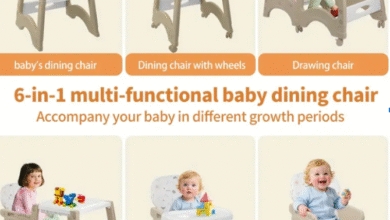How to clean cabinet for move out cleaning
Introduction
When moving out of, or inspecting a rental property, greasy cupboards scream neglected the most.
As a tenant trying to get a bond refund, a landlord getting the unit ready for new tenants, or an agent managing end-of-lease requirements, everyone wants the cabinets cleaned properly. Cleaning has its rules, and everyone should appreciate this regardless of their roles.
In this article, I’ll give you:
- A guide for cleaning kitchen cabinets
- Recommended tools and products for the job
- how to clean up grease, fingerprints, and grime
- Advice for cleaning wood or thermofoil cabinet surfaces
- Signs that call for professional move-out cleaning
Start with Decluttering: Why Empty Cabinets Matter
Before sponge-breaking, everything out of the cabinets needs to go.
If you see expired spices, broken bottles, or utensils, that’s the right moment to toss them. Your cleaning becomes more thorough when you declutter.
Steps to clean cabinets:
- Clear out the contents of the cabinets
- Look for crumbs, dust, or stains
- Remove old food and broken containers
- Remove stuck dirt around the corners through vacuuming
To return to zero clutter is vital, especially if there’s dust involved or grease and dirt. This step helps a lot, and it’s how every professional move-out clean starts.
How To Get Rid Of Greasy Kitchen Cabinets
Greasy cabinets are often located near heaters and sinks.
Avoid sharp cleaning products that may scrape the surface of the cabinets; instead, use warm water and dish soap together.
Try this method:
- A few drops of soap and hot water will create soapy water.
- Take a microfiber cloth and dip it into the soapy water.
- Squeeze out any excess water.
- Pay attention to stubborn spots by using paste made of baking soda and water.
- Lastly, remove pasted residue with a wet cloth and dry.
This technique is perfect for wooden cabinets as they do not require harsh scrubbing that may strip the finish.
How To Thoroughly Clean Every Kitchen Cabinet
Cabinets aren’t just dirty from grease, but drawers tend to get dirtier too, from sticky shelves from within.
Cleaning the outsides of the cabinets should be done with as much diligence as the insides; this is especially true when moving out.
Here’s what to do:
- Combine vinegar and warm water in a spray bottle.
- Spray inside the cabinets and wait one minute.
- Wipe with a microfiber cloth.
- Use a scrub brush for sticky residue.
- Remember corners, hinges, and drawer sliders.
As noted on the O2Ocleaning website, deep cleaning regularly helps in preventing issues with pests, odors, and other things. These are important for landlords and property agents to consider during inspections.
How to Clean Wood Kitchen Cabinets Without Stripping the Finish
Kitchen cabinets made of wood are great for adding warmth to a kitchen, but they can become dull-looking if the wrong cleaners are used.
Avoid using acidic or abrasive products.
Safe approach:
- Mix equal parts vinegar and water.
- Add a few drops of dish soap.
- Wipe the mixture off with a soft microfiber cloth.
- Use a toothbrush for small, tight areas.
- Dry the area with a soft towel immediately to avoid water damage.
If you’re not sure, test the solution on a small area first. Extra care should be taken when dealing with wood, as damage to cabinets is often a reason cited for disputes when moving out.
Removing Greasy Fingerprints from Cabinet Handles and Corners
You likely won’t see them while using the cabinets, but while you are packing up, they are noticeable everywhere.
Cabinet edges, corners, and handle areas accumulate oily grime and smudges.
Solution:
- Steam a cloth using vinegar
- target handle areas and the bottom-most parts of the cabinets.
- scrub brush for rough surfaces
- Dry after cleaning to avoid streaks.
This detail is often missed during casual cleanups, yet flagged during bond inspections. If you want to pass your final inspection, don’t skip this detail.
For a comprehensive clean, it’s best to hire a professional move-out cleaning company. They specialize in these clean, and are trained to catch these simple but hard to notice areas.
How to clean and prevent peeling on thermofoil cabinets
Rental thermofoil cabinets are common but require special attention.
Applying too much cleaning moisture or heat can cause bubbling or peeling.
Gentle method:
- Apply diluted dish soap with a soft cloth
- No steaming, hot water, or scrubbing.
- Avoid water pooling at the edges.
- Dry with a microfiber towel.
Using this approach helps maintain the cabinet’s surface and avoid repair costs that tenants could become liable for if damages are made.
Sneaky places to clean for cabinets
Upper corners, top ledges, and behind door hinges are favorite hiding places for dust.
These are classic “missed spots” during exit inspections.
Make it simple:
- Grab a small scrub brush or an old toothbrush.
- Spray stubborn grime with vinegar solution.
- Use an extendable duster for hard-to-reach spots.
- To clean tight grooves, wrap a cloth around a butter knife.
Professional cleaners use special tools that do a great job and won’t harm surfaces to clean hard-to-reach areas.
Need assistance? You may hire professionals for a complete end-of-lease cleaning Melbourne offers so that you don’t lose your refund because of small details.
When To Use Specific Cleaning Products vs. Natural Alternatives
Not all stains are removed with baking soda and vinegar, and some cabinets may need a cleaner from the store, especially if it is old and dirty.
Natural options are best for:
- Daily maintenance.
- Light grease or dusting.
- Wood and thermofoil cabinets.
Use commercial cleaners for:
- Old, neglected cabinets with deep-set grime.
- Mold or mildew.
- Sticky residues.
While still residing in the property, make sure to use non-toxic, pet-safe products. Look for enzyme-based cleaners that are safe for rentals and effective.
FAQs
How often should I clean my kitchen cabinets?
At least do light cleaning once a month, and for deep cleaning every 3-6 months if you cook often, then you frequently.
Can I use vinegar on all kinds of cabinets?
Nothing is perfect, and vinegar is most useful on certain cabinets. It is safe for most cabinets, but raw wood or painted surfaces should be avoided. Always test in a small spot first.
What’s the best way to remove the grease from cabinets?
In general, warm, soapy water works the best. If you need help with thick grease, baking soda mixed with a touch of water helps make a scrub paste that works wonders.
Should I clean any drawers before leaving the house?
Of course. Landlords often deduct from the bond for dirty cabinets, and it’s one of the items on exit checklists most of the time.
Is it smarter to let professionals do the cleaning for move-out?
If you’re low on time or want a guaranteed perfect finish, spending a bit more money on a professional serve will pay off, particularly in places like Melbourne with tight rental markets.
Conclusion
An empty space looks appealing when opened, and a well-maintained space draws in new tenants while ensuring a full bond refund.
You’ve conquered every hurdle within this guide, from dirty grease to inaccessible nooks and crannies.
If you feel fatigued or rushed, do not compromise your security deposit. Instead, reach out to professional cleaners in charge of move-out inspections.



